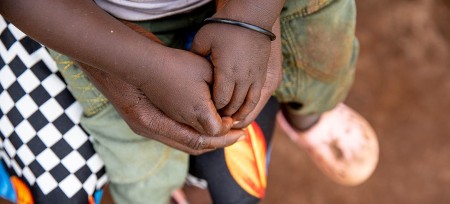BRIDGETOWN, Barbados – Ahead of World AIDS Day on Thursday, the UN Children’s Fund (UNICEF) is warning that progress in HIV prevention and treatment has nearly flatlined over the past three years, with many regions still not at pre-pandemic service coverage.
 A health center in Uganda is training and supporting mothers to deliver HIV-free babies. (Photo courtesy of UNICEF)According to UNICEF, an estimated 110,000 young people under age 19 died last year from AIDS-related causes, noting that coupled with 310,000 newly infected, the total number of young people living with HIV stands at 2.7 million.
A health center in Uganda is training and supporting mothers to deliver HIV-free babies. (Photo courtesy of UNICEF)According to UNICEF, an estimated 110,000 young people under age 19 died last year from AIDS-related causes, noting that coupled with 310,000 newly infected, the total number of young people living with HIV stands at 2.7 million.
“Though children have long lagged behind adults in the AIDS response, the stagnation seen in the last three years is unprecedented, putting too many young lives at risk of sickness and death,” said UNICEF Associate Chief of HIV/AIDS, Anurita Bains.
UNICEF said that this comes on top of an existing and growing gap in treatment between adults and children, adolescents, and pregnant women.
“Children are falling through the cracks because we are collectively failing to find and test them and get them on life-saving treatment. Every day that goes by without progress, over 300 children and adolescents lose their fight against AIDS,” she added.
Despite accounting for only seven percent of overall people living with HIV, children and adolescents comprised 17 percent of AIDS-related deaths, and 21 percent of new HIV infections last year.
UNICEF warned that unless the drivers of inequities are addressed, ending AIDS in children and adolescents will continue to be a distant dream.
But the UN agency said that the snapshot points out that longer-term trends remain positive.
New HIV infections among children under age 14 dropped by 52 percent from 2010 to 2021, and new infections among 15- to19-year-olds also dropped by 40 percent. Similarly, coverage of lifelong antiretroviral treatment (ART) among pregnant women living with HIV increased from 46 percent to 81 percent in a single decade.
But while the total number of children living with HIV is on the decline, the treatment gap between children and adults continues to grow.
In UNICEF’s HIV-priority countries, ART coverage for children stood at 56 percent in 2020 but fell to 54 percent in 2021.
Several factors were responsible for the decline, including the pandemic and other global crises that have increased marginalization and poverty. However, the failure also reflects waning political will and a flagging AIDS response in children.
Globally, only 52 percent of children living with HIV had access to treatment, which has only marginally increased over the past few years.
UNICEF said that during 2020, pregnant and breastfeeding women in Asia and the Pacific; the Caribbean; Eastern and Southern Africa; Latin America, the Middle East and North Africa, and West and Central Africa all experienced treatment coverage drops.
It said that except for West and Central Africa, which continues to see the highest burden of mother-to-child transmission, none of the regions, including the Caribbean, have recovered to 2019 levels, putting the lives of newborn babies at increased risk.
In 2021, more than 75,000 new child infections occurred because pregnant women were not diagnosed and initiated on treatment.
“With renewed political commitment to reaching the most vulnerable, strategic partnership and resources to scale up programs, we can end AIDS in children, adolescents and pregnant women”, Bains said.


